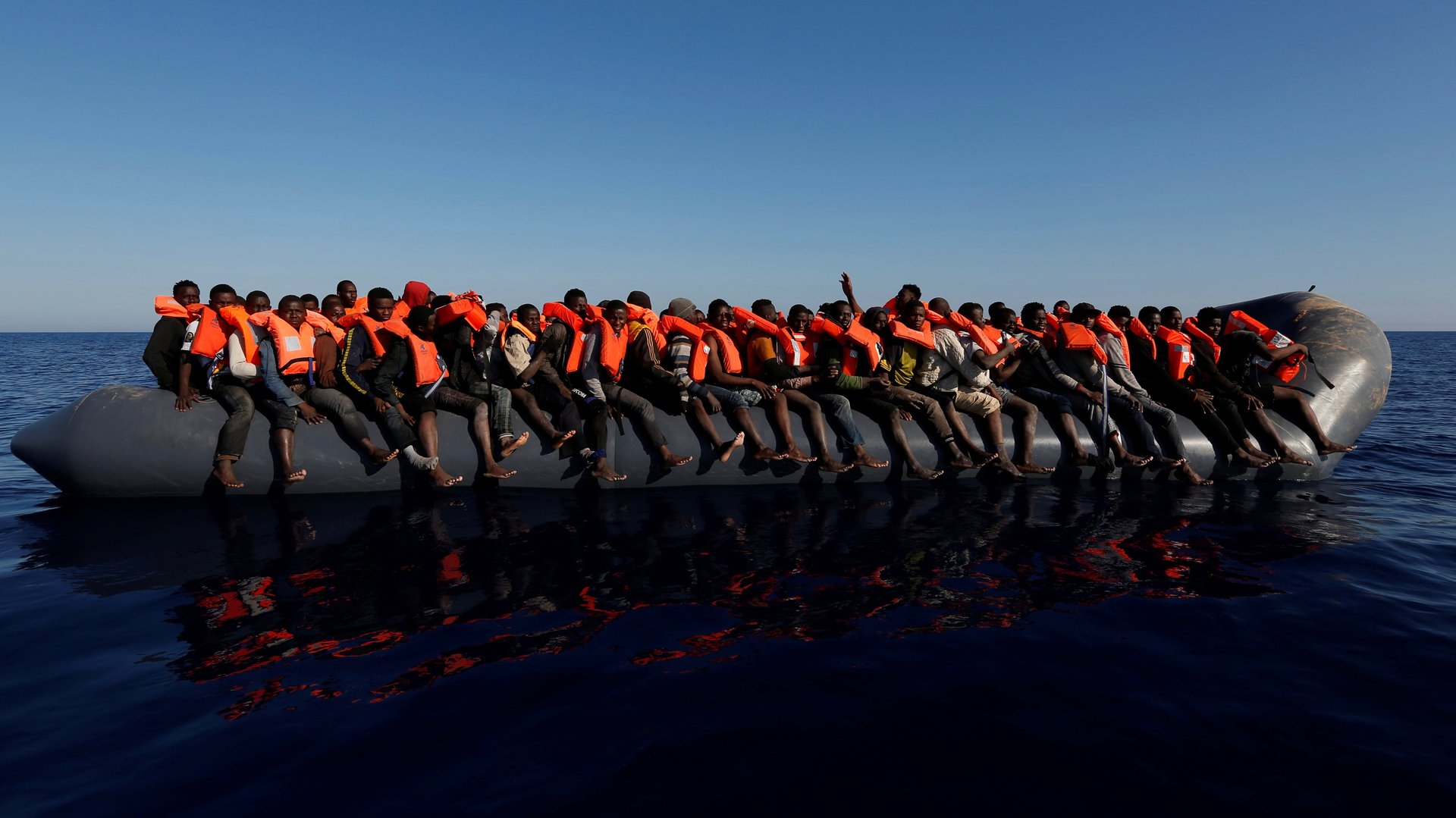Facebook is refusing to take down a video of African migrants being tortured—with good reason
“We want help. My brother, my brother, we are dead!”


“We want help. My brother, my brother, we are dead!”
These are the calls of a group of migrants, trapped in Libya and circulated on Facebook.
A video of about 260 mainly Somali and Ethiopian migrants held captive by criminal gangs in Libya has been circulating on Facebook. The International Organization for Migration wants the video removed, but the world’s largest social media network says it serves a greater purpose by raising awareness of the horror migrants face.
The footage, first posted in June, was apparently shot by a Somali journalist based in Turkey who recorded a video call when the gang reached out to him, according to the United Nations agency. In it are dozens of Somali and Ethiopian migrants huddled in a concrete room, emaciated and desperate.
“I have [been] here one year. I am beaten every day. I swear I do not eat food. My body is bruised from beating,” said one captive.
“This specific video was posted to condemn smuggling and raise awareness of the issue, so we would not consider it a violation of our policies,” Facebook said in an emailed statement to Quartz on Aug. 30. “We realize the video is disturbing so we have added a warning screen and the video’s distribution will be limited to those aged 18 and over.”
In another scene, the viewer can see a starved young man with a concrete block weighted on his back. The man has been under the stone for three days as punishment when his family failed to pay an $8,000 ransom.
The International Organization for Migration has asked Facebook to take down the video because it says the clips are being used to extort money. The captors have been known to send videos to the migrants’ loved ones via Facebook messenger or WhatsApp, demanding a ransom, according to the UN agency. Facebook said they could not comment on what are still allegations.
The search “migrants Libya” turns up dozens of harrowing videos of migrants being beaten, naked as they wash in an open room from a shared bucket, or washed up on the shore, dead. Many of them are put up by news organizations.
Facebook has come under fire for not taking down live videos of murder, but as the network becomes a key source of news, it will face many of the ethical organizations that news organizations are still trying to figure out themselves.
The migrant crisis has created a particular set of ethical issues. Last year, the New York Times published the image of migrants climbing over the dead bodies of other migrants on its front page, with the accompanying text, “Just like a slavery boat.” The image was criticized for trivializing the agony of black people as the people in the image went unnamed.
While newspapers like the Times may have some social influence over actors who can intervene to remedy desperate situation, Facebook hasn’t demonstrated a similar influence. A video on Facebook also lacks the usual news filters and ethical gatekeeping that a news image has; the company’s moderators have become de facto news editors.
Facebook’s ubiquity has been driving people to act anyway. Many of the young Africans who risk their lives to get to Europe are driven by “glamorous” social media posts of those who are already there, giving them hope that they, too, can enjoy such lives if only they can cross the Mediterranean.
Seeing images of what those crossings entail could act as a deterrent.